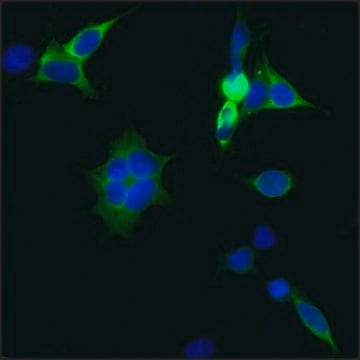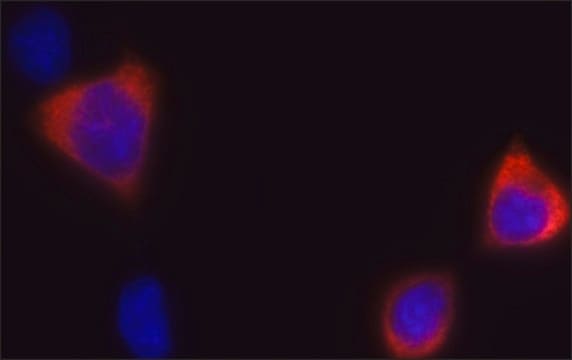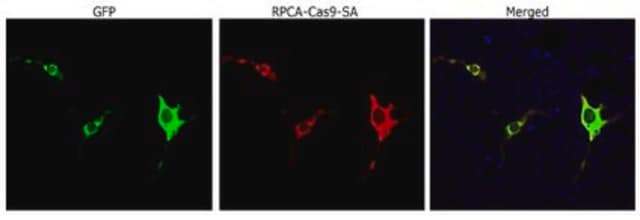MAC133
Anti-Cas9 Antibody, clone 7A9
clone 7A9, from mouse
Synonym(s):
dCas9
About This Item
Recommended Products
biological source
mouse
Quality Level
antibody form
purified antibody
antibody product type
primary antibodies
clone
7A9, monoclonal
species reactivity (predicted by homology)
all
technique(s)
immunocytochemistry: suitable
immunoprecipitation (IP): suitable
western blot: suitable
isotype
IgG1κ
shipped in
wet ice
target post-translational modification
unmodified
General description
Specificity
Immunogen
Application
Secondary & Control Antibodies
Secondary Antibodies Adsorbed for Dual Labeling
Immunoprecipitation Analysis: A representative lot immunoprecipitated Cas9 in Flag-Cas9 and Myc-Cas9 expressing cell lysate (performed by an independent laboratory).
Quality
Western Blotting Analysis: 0.5 µg/mL of this antibody detected Cas9 in 1 µg of HEK293 cell lysate expressing Flag-Cas9.
Target description
Physical form
Storage and Stability
Other Notes
Disclaimer
Not finding the right product?
Try our Product Selector Tool.
Storage Class Code
12 - Non Combustible Liquids
WGK
WGK 1
Flash Point(F)
Not applicable
Flash Point(C)
Not applicable
Certificates of Analysis (COA)
Search for Certificates of Analysis (COA) by entering the products Lot/Batch Number. Lot and Batch Numbers can be found on a product’s label following the words ‘Lot’ or ‘Batch’.
Already Own This Product?
Find documentation for the products that you have recently purchased in the Document Library.
Our team of scientists has experience in all areas of research including Life Science, Material Science, Chemical Synthesis, Chromatography, Analytical and many others.
Contact Technical Service








